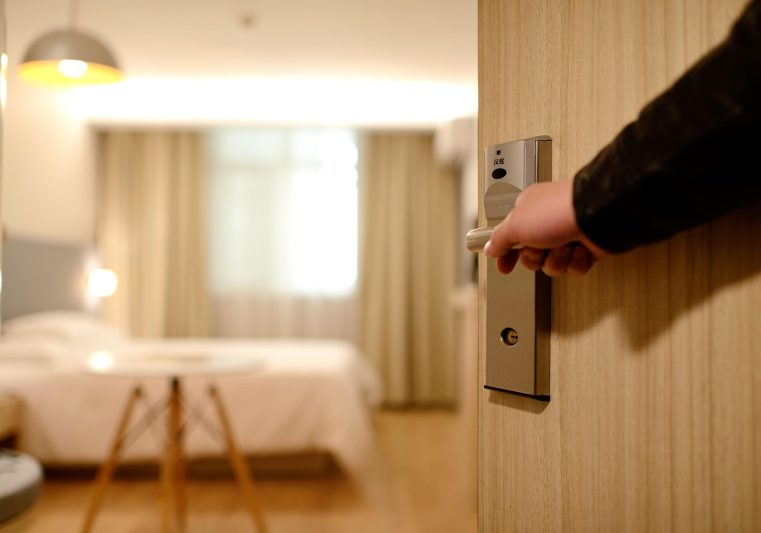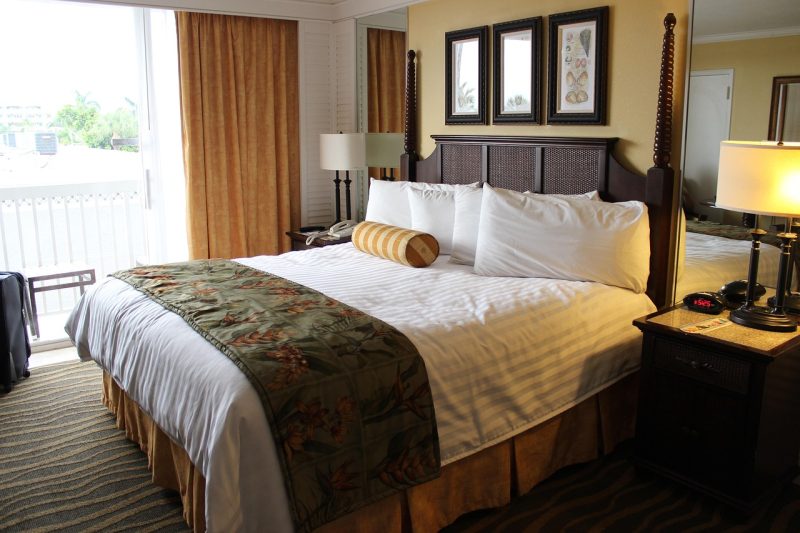Hotel star ratings play a vital role in guiding travelers, providing a universal benchmark to evaluate the quality and services offered by accommodations across the globe. These ratings are based on specific Hotel Star Rating Criteria, which help guests make well-informed choices that align with their expectations and travel needs.

By offering a clear understanding of what each star level represents, these systems ensure that travelers can confidently select accommodations that suit their preferences.
The concept of rating hotels according to their amenities and service standards has a rich history, dating back to the early 20th century. Initially developed in Europe, this system quickly gained traction and expanded worldwide.
Over the years, different countries have adapted the Hotel Star Rating Criteria to reflect their unique cultural influences, economic conditions, and evolving travel trends. This evolution has made hotel star ratings an indispensable tool for modern travelers, simplifying the decision-making process and enhancing the overall travel experience.
The importance of these ratings extends beyond just guiding travelers; they also impact the hospitality industry. For hotels, achieving a higher star rating can enhance their reputation, attract more guests, and justify higher prices. Conversely, lower ratings can lead to decreased bookings and revenue. As such, both travelers and hotel operators have a vested interest in understanding how these classifications work.
Travelers can benefit immensely from knowing how star ratings are determined and what each level signifies. This knowledge helps them set realistic expectations about their stay, whether they are looking for basic accommodations or luxurious experiences. In the dynamic landscape of hospitality, star ratings provide a foundation for quality assurance and customer satisfaction, paving the way for informed choices and memorable stays.
As we delve deeper into the intricacies of hotel ratings, we will explore the various systems in place around the world and the specific criteria that define each level.

Understanding Hotel Star Rating Systems Worldwide
When it comes to hotel star ratings, the systems can differ significantly across countries and regions. Each nation often has its own criteria for classification, influenced by local culture, expectations, and travel norms. For example, a three-star hotel in Italy may offer different amenities than a three-star hotel in the United States, reflecting regional preferences.
Official vs. Unofficial Rating Organizations
Moreover, the world of hotel ratings isn’t just black and white. There are official organizations, such as government bodies and recognized tourism boards, that set the standards for star ratings. These entities typically follow strict guidelines and conduct regular inspections to ensure compliance.
Conversely, many unofficial rating organizations also exist. These can include travel websites or private companies that create their own rating systems based on user reviews or subjective assessments. While these ratings can provide useful insights, they may lack the rigorous evaluation process found in official ratings, leading to potential discrepancies.
Variations Between Private and Government Agencies
The differences in star ratings don’t stop at official versus unofficial organizations. Private agencies often adopt more flexible criteria that can adapt quickly to changing traveler expectations. In contrast, government agencies usually maintain a more rigid structure, focusing on essential services and safety protocols.
This divergence in approaches can lead to variations in what travelers can expect from hotels rated by different organizations. As a result, understanding the underlying system behind the star ratings is crucial for making informed decisions about where to stay.
With this knowledge, travelers can navigate the complex landscape of hotel classifications and make choices that suit their needs.
One-Star Hotel Standards: Basic Accommodations
Minimum Requirements for One-Star Classification
One-star hotels are the entry-level tier in hotel star ratings, designed primarily for budget-conscious travelers. These establishments must meet certain minimum requirements to earn their classification. Typically, they are expected to provide:

- Clean rooms and bedding
- Basic bathroom facilities (toilet, shower, or bath)
- Adequate heating or cooling systems
- A secure environment for guests
While these standards may seem minimal, they ensure that guests have a safe and comfortable place to rest.
Typical Amenities and Services Offered
Guests at one-star hotels should not expect luxurious amenities. Instead, the focus is on providing essential services. Common features include:
- Basic furniture (bed, table, and chair)
- Limited toiletries (soap, shampoo)
- Access to a common area, though it may not be furnished for leisure
- Front desk service during limited hours
Some one-star hotels might offer basic breakfast options, but this varies widely depending on the location.
What Travelers Should Realistically Expect at This Level
When booking a one-star hotel, it’s crucial for travelers to manage their expectations. While cleanliness and safety are prioritized, don’t expect additional comforts like room service or extensive on-site facilities.
These accommodations can serve as a practical choice for travelers looking to save money, especially when exploring new destinations. However, understanding what to anticipate helps avoid disappointment and allows guests to appreciate the value of simplicity.
As we delve deeper into the world of hotel classifications, we’ll explore the criteria that distinguish two-star properties from their one-star counterparts, highlighting how comfort and amenities gradually expand with each rating.
Two-Star Hotel Criteria: Budget-Friendly Comfort
When exploring the intricacies of hotel classifications, understanding the Hotel Star Rating Criteria becomes essential for travelers seeking the perfect stay. Two-star hotels represent a significant upgrade from the simplicity of one-star accommodations.
While one-star properties cater to budget-conscious travelers with basic amenities, two-star hotels elevate the experience by incorporating added comfort and convenience.
These enhancements often include improved furnishings, additional services, and a more welcoming atmosphere, making them an appealing choice for those looking to balance affordability with a touch of extra care.
Key Differences Between One-Star and Two-Star Properties
Two-star hotels typically include additional services that elevate the overall stay. Here’s how they differ:
- Service Availability: Most two-star hotels have a 24-hour front desk service, allowing for more flexibility in check-in and assistance.
- Housekeeping: Daily housekeeping is standard, ensuring rooms are kept tidy and comfortable throughout the stay.
- Amenities: You can expect more in-room amenities, such as a television, coffee maker, or mini-fridge, which are often missing in one-star hotels.
Standard Amenities and Services at This Level
Travelers choosing a two-star hotel can look forward to several standard features, including:
- Comfortable bedding and linens
- Basic toiletries in the bathroom
- Wi-Fi access (though speeds may vary)
- Parking facilities, often free or at a low cost
- A continental breakfast option, providing a convenient start to the day
Typical Guest Experience at Two-Star Establishments
Guests at two-star hotels will generally find a welcoming atmosphere with friendly staff ready to assist. These properties cater to budget-conscious travelers who appreciate comfort without breaking the bank. Whether you’re on a road trip or attending a local event, a two-star establishment provides a reliable base for your adventures.
With these criteria established, it’s clear that two-star hotels serve an important role in the hospitality landscape, offering value while maintaining essential comforts.
As we explore further classifications, the next level up promises an even richer experience, blending mid-range quality with expanded amenities tailored to a diverse range of travelers.
Three-Star Hotel Requirements: Mid-Range Quality
Essential Criteria for Achieving Three-Star Status
Three-star hotels are the sweet spot for many travelers seeking a balance between comfort and affordability. To achieve this rating, hotels must meet specific criteria that elevate them above their two-star counterparts.

Typically, these establishments offer:
- 24-hour front desk service
- Daily housekeeping
- Reliable Wi-Fi access
- In-room amenities like a television, coffee maker, and basic toiletries
Expanded Amenities and Services Compared to Lower Categories
What sets three-star hotels apart is the quality of services and amenities they provide. Guests can expect expanded offerings such as:
- A continental breakfast with assorted options
- On-site dining or snack facilities
- Fitness centers or pools in some locations
- Better quality linens and bedding
These enhancements create a more pleasant stay, appealing to business and leisure travelers who appreciate added comforts.
Target Market and Typical Guest Expectations
The three-star category caters primarily to moderate-budget travelers. This group often includes families, tourists, and business professionals looking for a well-rounded experience without breaking the bank.
Guests typically expect:
- Clean, comfortable rooms
- Friendly and efficient service
- Convenient locations near attractions or business districts
While not as luxurious as four-star properties, three-star hotels provide a reliable option for those wanting a pleasant stay at a reasonable price.
As we continue exploring hotel classifications, it’s essential to understand how these ratings influence the overall guest experience and expectations across different types of establishments.
Four-Star Hotel Standards: Upscale Luxury
When you step into a four-star hotel, you’re entering a world of upscale luxury that goes beyond mere comfort. These establishments are designed for travelers who seek a more refined experience without heading into the realm of ultra-luxury.
Comprehensive Requirements for Four-Star Classification
To achieve a four-star rating, hotels must meet a range of comprehensive standards. This includes:
- Spacious and well-decorated guest rooms
- High-quality bedding and linens
- In-room amenities such as mini-bars, coffee makers, and premium toiletries
- On-site dining options, often featuring a full-service restaurant
- Meeting facilities for business travelers
- Concierge services to assist with reservations, tours, and transportation
Premium Amenities and Enhanced Service Levels
Four-star hotels pride themselves on offering premium amenities that elevate the guest experience. Expect features like:
- Fitness centers equipped with modern exercise equipment
- Swimming pools, often both indoor and outdoor
- Spa services, providing relaxation and wellness treatments
- Room service available with a diverse menu
- Complimentary Wi-Fi and business services
Service levels are also enhanced; staff members are trained to provide attentive service while maintaining professionalism.
Staffing, Facility, and Experience Expectations
The staffing at a four-star establishment is typically higher, ensuring that guests receive prompt attention. Expect a team that includes:
- Front desk staff available 24/7
- Housekeeping that maintains high cleanliness standards
- Restaurant staff trained in fine dining etiquette
Facilities are well-maintained, with regular updates to decor and furnishings, creating an inviting atmosphere. Guests can anticipate a seamless experience from check-in to check-out, making their stay memorable.
As we move forward in understanding the various hotel classifications, it’s essential to recognize how these standards not only define luxury but also influence guest expectations and experiences across all types of accommodations.
Five-Star Hotel Criteria: Ultimate Luxury Experience
When it comes to five-star hotels, expectations soar to unprecedented heights. These properties are not just places to stay; they aim to provide an experience that indulges every sense. Let’s delve into what makes these establishments truly exceptional.
Rigorous Standards for Classification
Five-star hotels undergo stringent evaluations to ensure they meet the highest standards. This includes:
- Spacious Accommodations: Rooms are typically larger with upscale furnishings, luxurious bedding, and high-quality materials.
- Personalized Services: Expect concierge services, 24-hour room service, and dedicated staff who remember your preferences.
- Refined Dining Options: Multiple on-site restaurants often feature renowned chefs and diverse cuisines, ensuring guests can indulge in culinary excellence.
Exceptional Service, Amenities, and Facilities
What differentiates a five-star hotel from its lesser-rated counterparts is the level of service and amenities:
- Spa and Wellness Facilities: Many five-star hotels boast world-class spas offering a range of treatments to rejuvenate both body and mind.
- State-of-the-Art Fitness Centers: These properties usually provide comprehensive fitness options, including personal trainers and group classes.
- Exclusive Experiences: From private tours to personalized excursions, five-star hotels often offer unique experiences tailored to individual guest interests.
What Makes Five-Star Properties Truly Exceptional
Beyond the tangible aspects, five-star hotels focus on creating memorable experiences through attention to detail and customer care.
- Ambiance and Aesthetics: The design and decor play a crucial role, with many five-star hotels showcasing art collections or stunning architecture that enhances the overall ambiance.
- Cultural Integration: High-end hotels may offer local cultural experiences, allowing guests to engage with the destination in a meaningful way.
- Guest Feedback Utilization: Exceptional properties actively seek and implement feedback to continually improve their offerings, ensuring that each visit feels fresh and tailored.
As we look at luxury hospitality, understanding these high standards can help travelers appreciate the commitment behind five-star ratings. This sets the stage for exploring the fascinating world of unofficial ratings and unique classifications in the next segment.
Beyond Five Stars: Seven-Star and Special Classifications
The Truth About Seven-Star Ratings
When we talk about hotel ratings, the familiar five-star system usually comes to mind. However, some hotels have taken it a notch higher, claiming a seven-star rating. But what does that even mean? In reality, there isn’t an official global standard for seven-star classifications. Instead, these properties often self-proclaim their status based on extraordinary amenities, services, and overall guest experience that go well beyond traditional luxury.
Examples of Self-Proclaimed Seven-Star Properties
One of the most famous examples is the Burj Al Arab in Dubai. This iconic hotel markets itself as the world’s only seven-star hotel, boasting opulent suites, private butlers, and its own helipad. While it certainly delivers an extravagant experience, its classification is more about branding than recognized standards.
Another intriguing concept is Amberlair, a hotel designed with input from guests, aiming to create a personalized stay. While not officially rated, it represents a shift toward unique experiences in hospitality.
Special Classifications and What They Mean
Beyond the seven-star allure, special classifications exist to highlight unique offerings. For instance, eco-hotels focus on sustainability and environmentally friendly practices, while boutique hotels emphasize personalized service and distinct design. These classifications can provide travelers with alternatives that fit specific preferences and values.
As travelers continue to seek out unique and luxurious experiences, the lines between traditional star ratings and creative classifications blur. This evolution mirrors a growing demand for individualized service and exceptional quality.
With this dynamic landscape, understanding how hotels are categorized becomes vital for making informed choices that match your travel desires.
How Hotels Are Evaluated and Rated
When it comes to determining how hotels earn their star ratings, a thorough evaluation process is essential. This process often involves inspections by official inspectors or the use of mystery shoppers who assess various aspects of the hotel experience.
The Inspection and Evaluation Process
Hotel evaluations typically begin with a comprehensive inspection. Inspectors visit the property unannounced to gauge everything from cleanliness and service quality to the amenities offered. They follow a strict checklist that aligns with established standards for each star rating. This ensures consistency and fairness in how hotels are rated.
Mystery Shoppers and Official Inspectors
Mystery shoppers play a crucial role in this evaluation process. These individuals pose as regular guests to provide genuine feedback on their experiences. They report on the service received, the quality of facilities, and any other relevant factors. Official inspectors also conduct these assessments but may employ different criteria based on their organization’s rating system. The combination of both types of evaluations helps create a well-rounded picture of what a hotel truly offers.
Frequency of Evaluations and Maintaining Standards
Hotels aren’t just evaluated once; they undergo regular assessments to maintain their star ratings. The frequency of these evaluations can vary, but many organizations require annual or biannual checks. This ongoing scrutiny helps ensure that hotels continue to meet the high standards associated with their rating. If a hotel fails to maintain these standards, it risks losing its star classification.
This meticulous evaluation process not only enhances transparency but also helps travelers make informed decisions about where to stay. As we look deeper into star ratings, we’ll explore how travelers can verify a hotel’s star rating and identify reliable sources of information.
Verifying a Hotel’s Star Rating: Hotel Star Rating Criteria
When planning your next getaway, knowing how to verify a hotel’s star rating is crucial. With various systems in place, it’s essential to pinpoint the official rating from reliable sources. Here’s how you can confidently assess a hotel’s classification.
Checking Official Ratings
To find a hotel’s star rating, start by visiting official tourism websites for the country or region where the hotel is located. Most countries have government-sanctioned organizations that regulate star ratings. You can also check reputable travel websites that aggregate reviews and ratings from travelers.
Reliable Sources for Verification
Some trustworthy platforms include:
- Official Tourism Boards: They often provide comprehensive lists of rated hotels.
- Travel Agencies: Established agencies have access to verified information regarding hotel ratings.
- Review Aggregators: Websites like TripAdvisor and Google Reviews can offer insight into guest experiences, although they may not reflect official ratings.
Beware of Misleading Marketing
It’s essential to be cautious of misleading marketing tactics. Some hotels may display stars without proper accreditation or use self-ratings that lack credibility. Always cross-reference the information with reliable sources to ensure you’re making informed choices.
By understanding how to verify a hotel’s star rating, you empower yourself to avoid disappointment and make selections aligned with your expectations. As the hospitality industry evolves, considering both official ratings and guest feedback will serve you well in navigating the diverse hotel landscape.
Star Ratings vs. Guest Reviews
When planning a trip, hotel star ratings and guest reviews are two crucial aspects that travelers often consider. While star ratings provide a standardized measure of quality and service, guest reviews offer personal experiences that are equally important.

How Official Ratings Differ from User-Generated Reviews
Official star ratings are determined by established guidelines set by organizations or government agencies. These ratings focus on specific criteria like room quality, amenities, and services offered. For instance, a five-star hotel is expected to provide luxurious accommodations, top-notch service, and a range of premium amenities.
On the other hand, guest reviews are subjective and based on individual experiences. A traveler might rate a five-star hotel poorly due to an unresponsive staff or cleanliness issues, highlighting how personal expectations can shape perceptions. Thus, while star ratings offer a baseline, reviews can reveal nuances that ratings might miss.
Why a Five-Star Hotel Might Have Poor Reviews
It might seem surprising that a five-star hotel could receive negative reviews. However, factors such as inconsistent service, localized issues, or even bad timing—like renovations—can lead to disappointing experiences for guests. This discrepancy underscores the importance of reading multiple reviews to understand what a hotel truly offers.
Using Both Systems for a Complete Picture
To make informed decisions, it’s essential to use both star ratings and guest reviews. Start with the star rating to gauge the hotel’s classification and then delve into reviews for insights on guest satisfaction. Look for common themes in reviews, such as mentions of cleanliness, service quality, or the comfort of beds. Together, these provide a clearer view of what to expect from your stay.
As you navigate through the complexities of hotel evaluations, the next steps will explore how hotels are evaluated and rated, shedding light on the processes behind those star ratings.
Making Informed Decisions Using Star Ratings
When planning your next getaway, hotel star ratings can play a crucial role in shaping your choices. They offer a quick reference point for evaluating the quality of accommodations. However, it’s important to remember that these ratings are just one part of the puzzle.
Using Star Ratings in Your Selection Process
Star ratings provide a standardized measure of what you can expect in terms of service and amenities. For instance, if you’re considering a three-star hotel, you can generally anticipate a higher level of comfort than a two-star property. But don’t just rely on stars alone!
- Consider Location: A five-star hotel in a less desirable area might not be as enjoyable as a three-star hotel in a prime location.
- Evaluate Price Points: Sometimes, a lower-rated hotel may offer competitive pricing that fits better within your budget without sacrificing too much comfort.
Who Gives the Star Ratings for Hotels?
Star ratings for hotels are typically assigned by various organizations, depending on the country or region. These organizations may include government tourism boards, independent rating agencies, and travel associations.
| Region | Organization | Key Features |
|---|---|---|
| North America | AAA/CAA | Diamond ratings (1–5♦); focuses on amenities and service |
| Europe | Hotelstars Union | Harmonized 1–5★ across 22 countries; "Superior" designation |
| UK | AA / Visit Britain | 1–5★ plus "Inspectors' Choice" red stars; harmonized with tourism boards |
| Global Luxury | Forbes Travel Guide | Service-centric anonymous inspections; 5★ = "ultimate luxury" |
| Asia-Pacific | ATIC (Australia), JTB (Japan) | 200+ criteria (Australia); unique standards for ryokans (Japan) |
Balancing Ratings with Other Factors
While star ratings are helpful, they should not be the sole basis for your decision. User-generated reviews can illuminate aspects of the guest experience that ratings don’t capture. Look for patterns in feedback, such as cleanliness or customer service.
- Prioritize What Matters Most: If you value luxury amenities, then a four or five-star hotel might be worth the splurge. However, if you’re only using the hotel as a base for exploration, a more budget-friendly option may suffice.
When Ratings Matter Less: Hotel Star Rating Criteria
There are scenarios where star ratings may take a back seat. For example, if you’re traveling for a special event or occasion, personal recommendations from friends or family could outweigh official ratings. Similarly, unique boutique hotels might not conform to traditional rating systems but can offer memorable experiences.
As you contemplate your travel plans, remember that while star ratings are a useful tool for gauging quality, they should harmonize with other factors like location, price, and personal preferences to guide you toward the perfect stay.
The Future of Hotel Rating Systems
As we look ahead, the landscape of hotel rating systems is evolving. Emerging trends are reshaping how accommodations are classified and perceived by travelers.
Emerging Trends in Hotel Classification: Hotel Star Rating Criteria
The hospitality industry is witnessing a significant shift with the growing popularity of alternative accommodations. Platforms like Airbnb have introduced travelers to unique lodging experiences that often emphasize personalization and authenticity over traditional amenities. This trend is reshaping the landscape of the Hotel Star Rating Criteria, as these unconventional stays challenge the conventional benchmarks used to evaluate hotels.
To remain competitive, traditional hotels are being pushed to innovate, offering more tailored and memorable experiences that go beyond the standard star rating expectations.
Another transformative trend is the heightened focus on sustainability within the travel sector. Modern travelers are increasingly prioritizing eco-friendly accommodations, compelling hotels to adopt greener practices. From energy-efficient systems to waste reduction initiatives, sustainability is becoming a core value for many properties.
As this demand grows, it’s likely that the Hotel Star Rating Criteria will evolve to include environmental factors, ensuring that eco-conscious efforts are recognized and rewarded. This shift not only influences how hotels are rated but also impacts how they are marketed to an audience that values responsible travel.
The Impact of Technology and Social Media on Traditional Ratings
Technology and social media are also transforming how guests perceive hotel quality. Online reviews on platforms like TripAdvisor or Google can sway potential customers more than traditional star ratings. Many travelers now rely on user-generated content for real-time insights into their prospective stays. Hotels must engage with these platforms, addressing feedback and showcasing their strengths to appeal to tech-savvy consumers.
Additionally, new technologies, such as artificial intelligence and machine learning, are being employed to analyze guest feedback and improve services. These innovations could lead to more dynamic rating systems that adapt based on customer experiences rather than static evaluations.
Potential Changes to Standardize Global Rating Systems
Standardizing hotel rating systems on a global scale presents a significant challenge due to the diverse criteria adopted by different countries. Each region has its own unique approach to evaluating accommodations, which can create confusion for travelers seeking reliable information. Establishing a universal framework for Hotel Star Rating Criteria could bring immense value to both the hospitality industry and its guests.
Such a system would promote consistency and transparency, enabling travelers to compare hotels across borders with confidence. By aligning these standards, the industry could simplify decision-making for travelers while fostering trust and clarity in the booking process.
As the hospitality sector continues to evolve, these factors will shape the future of hotel rating systems. Understanding these dynamics will empower travelers in their quest for the perfect stay, paving the way for a more informed and enjoyable travel experience.

Be the first to comment